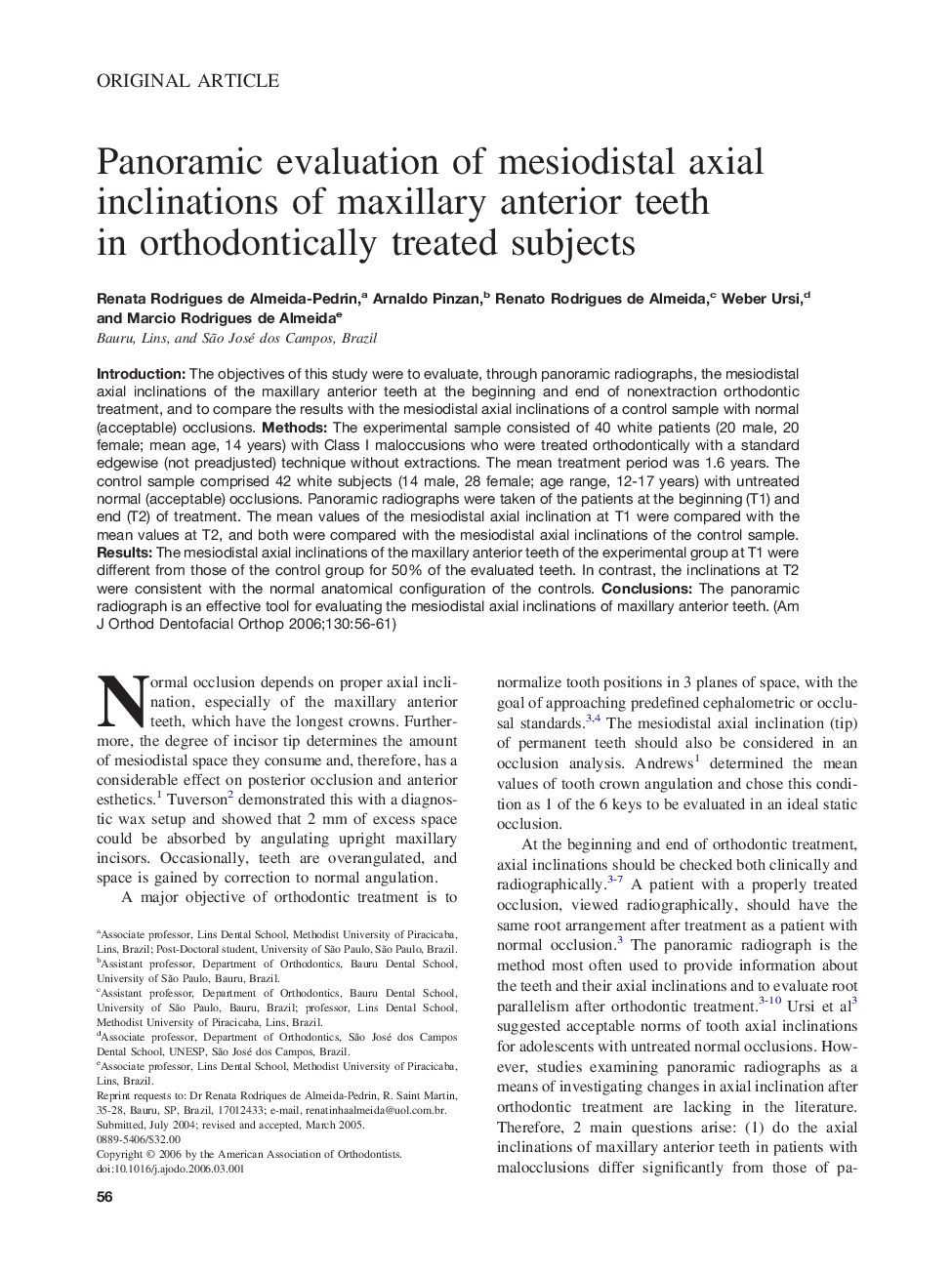| Article ID | Journal | Published Year | Pages | File Type |
|---|---|---|---|---|
| 3119005 | American Journal of Orthodontics and Dentofacial Orthopedics | 2006 | 5 Pages |
Introduction: The objectives of this study were to evaluate, through panoramic radiographs, the mesiodistal axial inclinations of the maxillary anterior teeth at the beginning and end of nonextraction orthodontic treatment, and to compare the results with the mesiodistal axial inclinations of a control sample with normal (acceptable) occlusions. Methods: The experimental sample consisted of 40 white patients (20 male, 20 female; mean age, 14 years) with Class I maloccusions who were treated orthodontically with a standard edgewise (not preadjusted) technique without extractions. The mean treatment period was 1.6 years. The control sample comprised 42 white subjects (14 male, 28 female; age range, 12-17 years) with untreated normal (acceptable) occlusions. Panoramic radiographs were taken of the patients at the beginning (T1) and end (T2) of treatment. The mean values of the mesiodistal axial inclination at T1 were compared with the mean values at T2, and both were compared with the mesiodistal axial inclinations of the control sample. Results: The mesiodistal axial inclinations of the maxillary anterior teeth of the experimental group at T1 were different from those of the control group for 50% of the evaluated teeth. In contrast, the inclinations at T2 were consistent with the normal anatomical configuration of the controls. Conclusions: The panoramic radiograph is an effective tool for evaluating the mesiodistal axial inclinations of maxillary anterior teeth.
